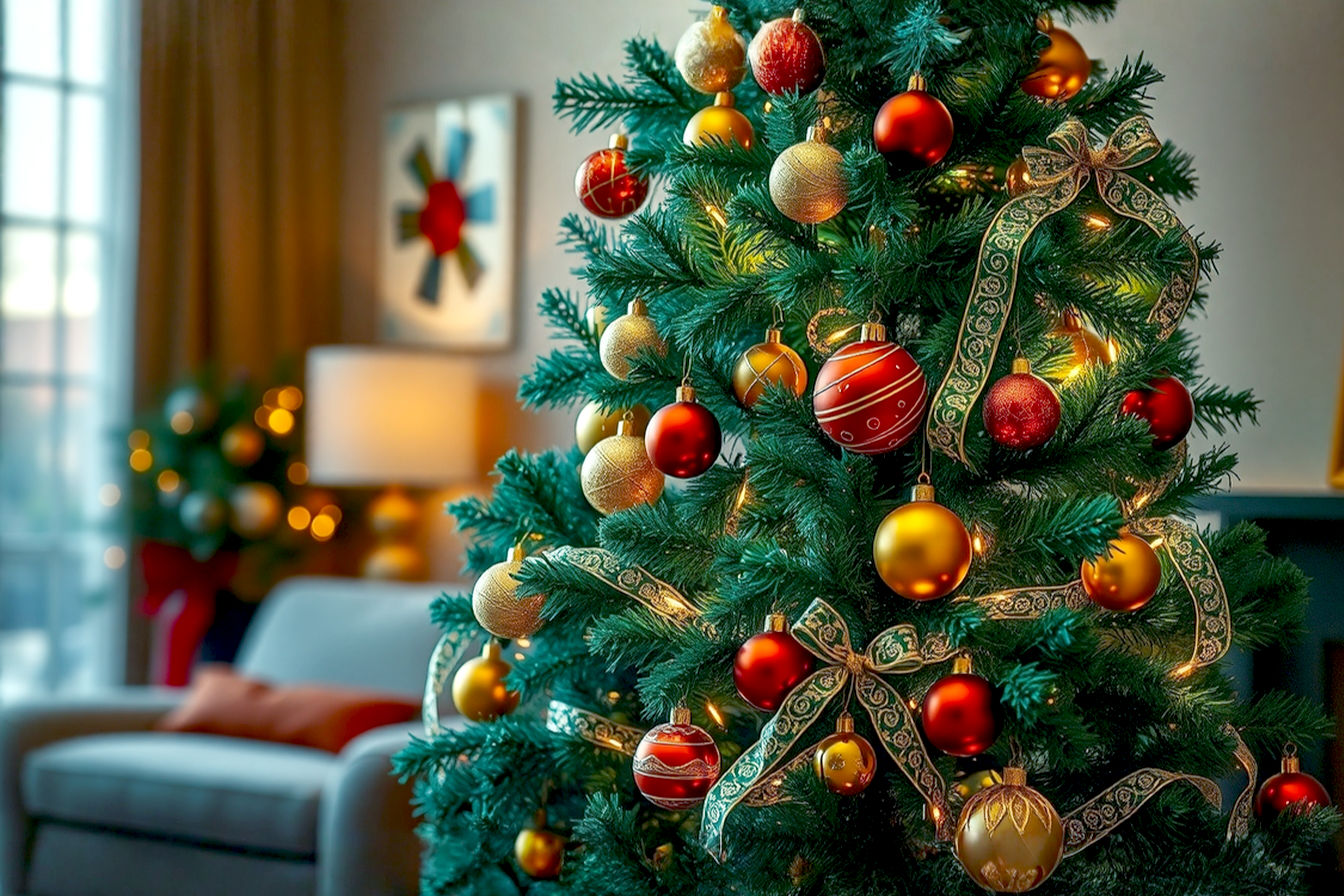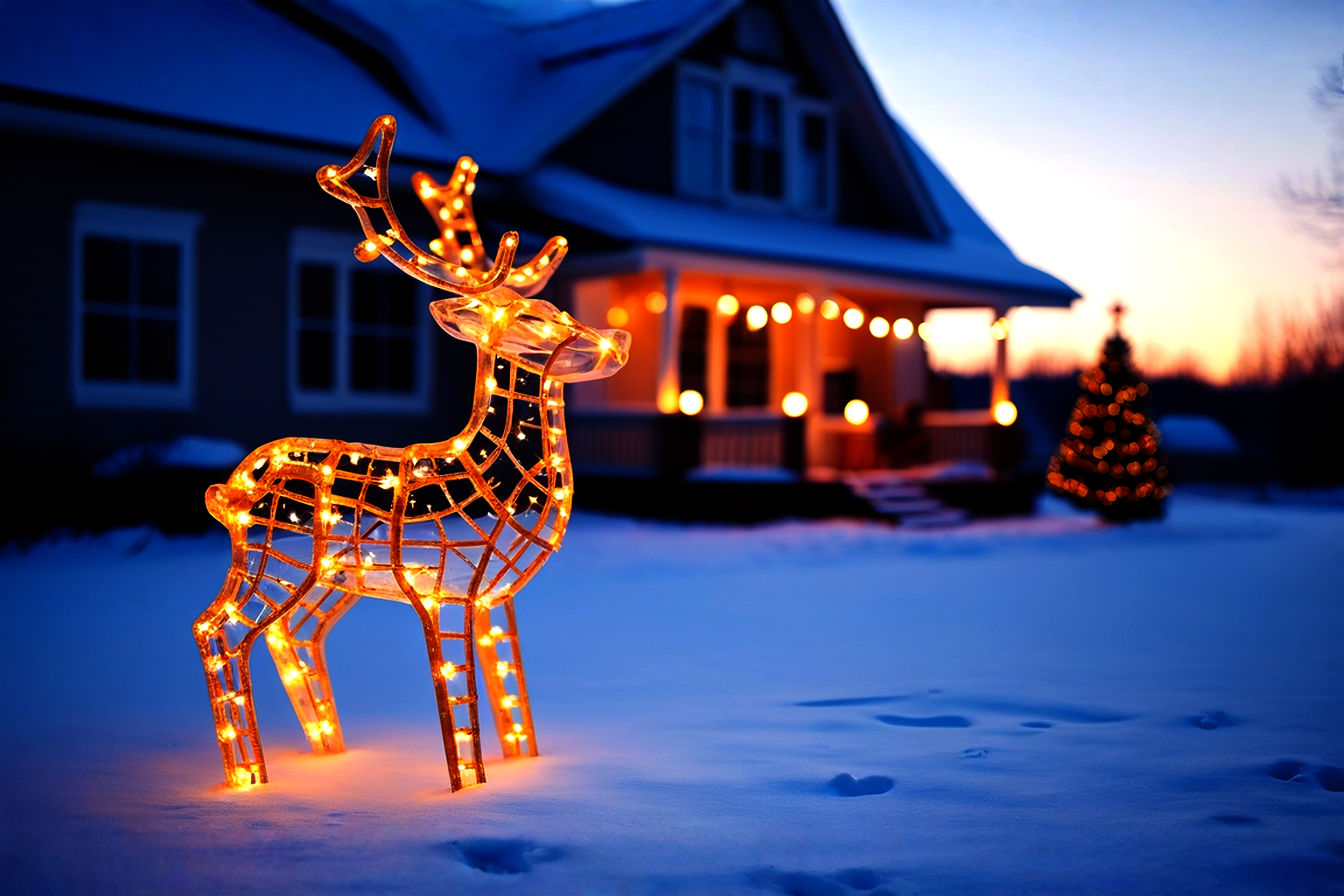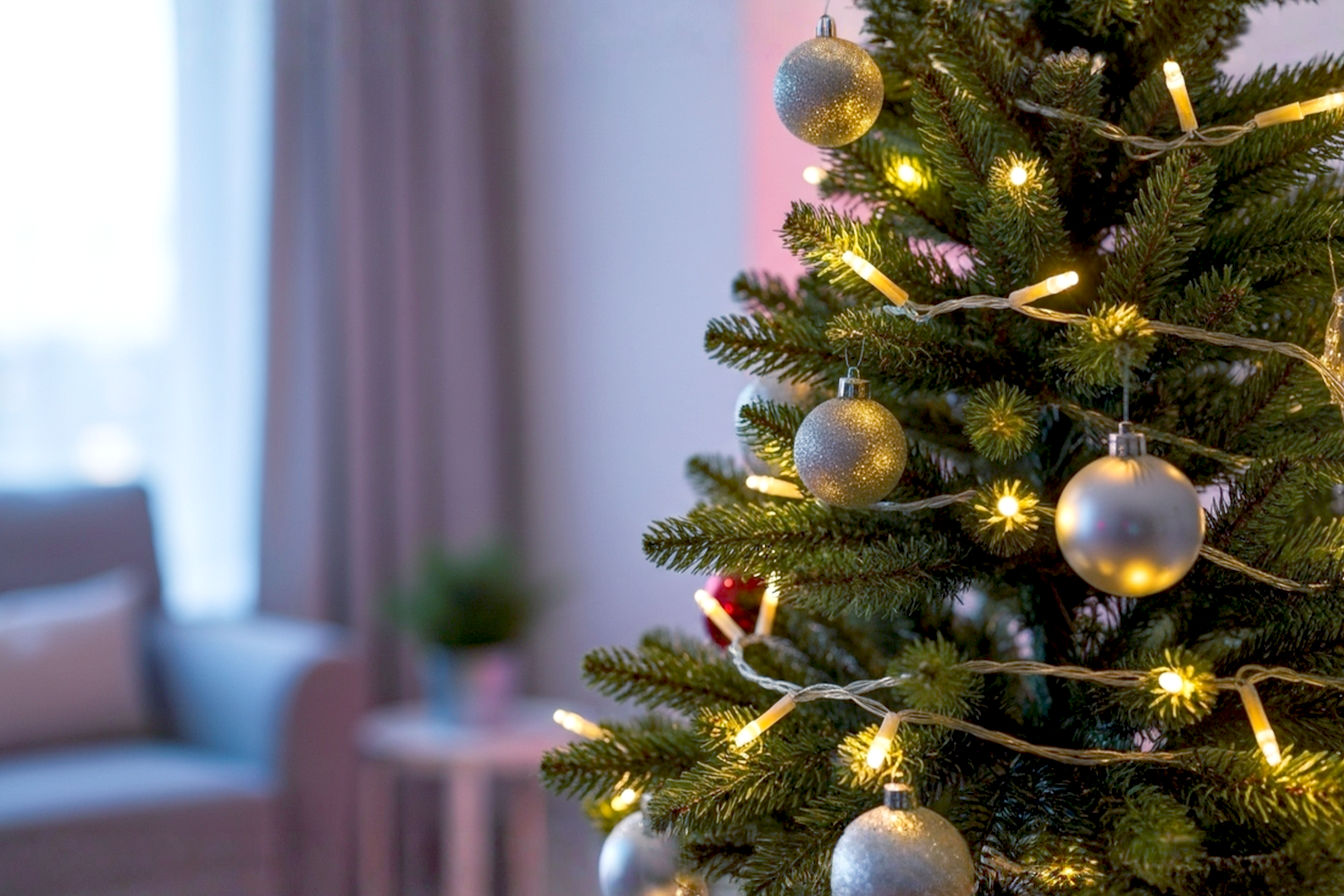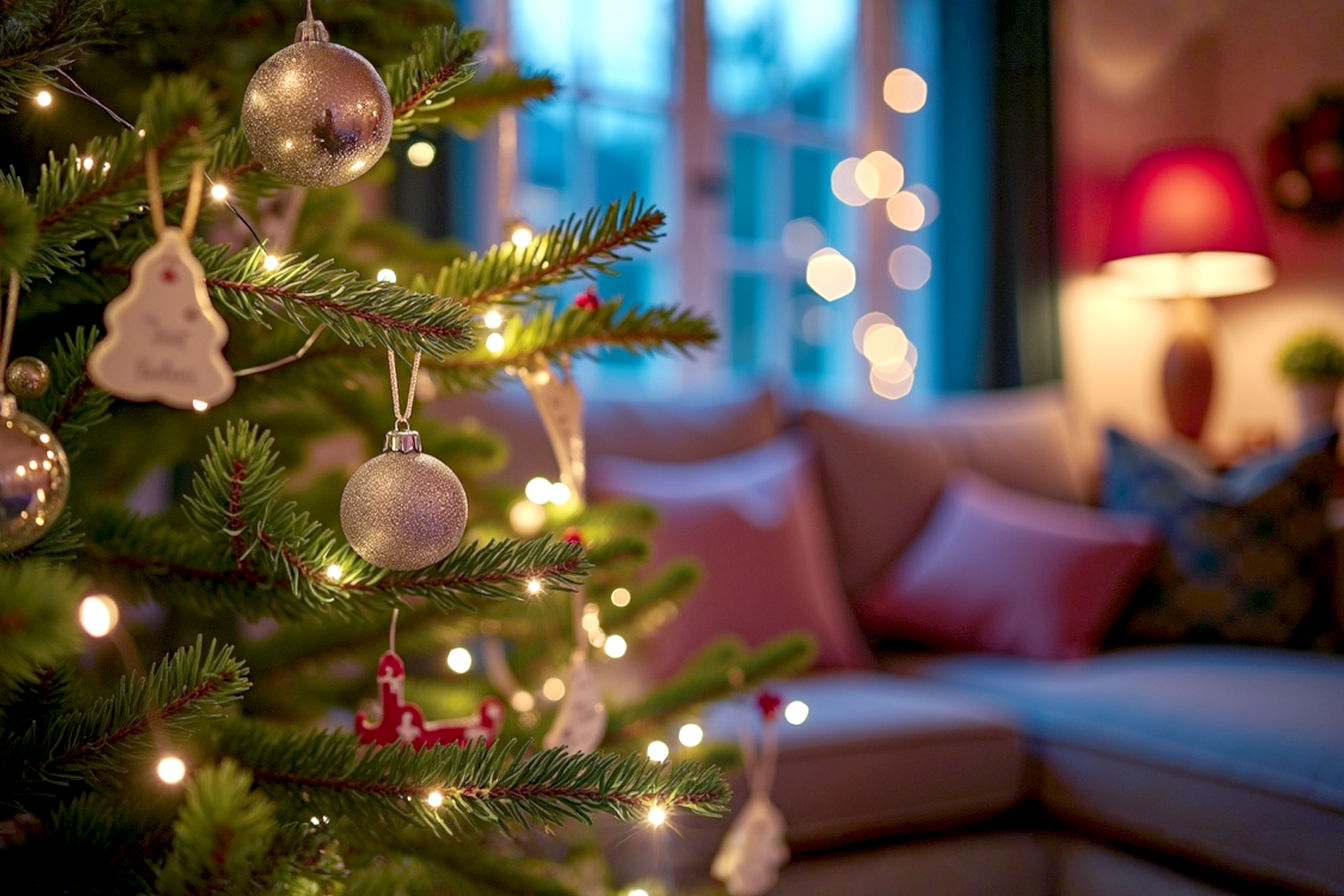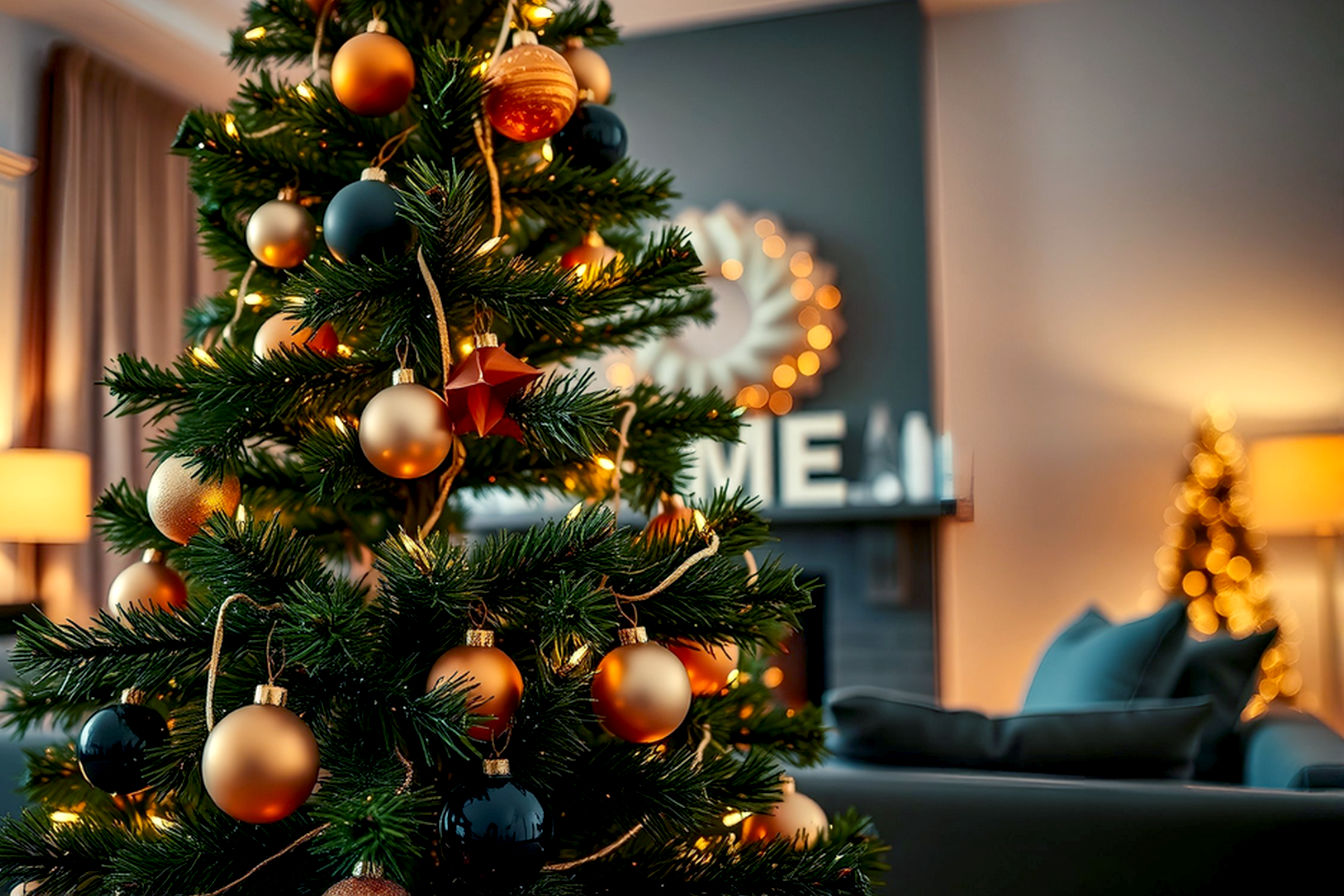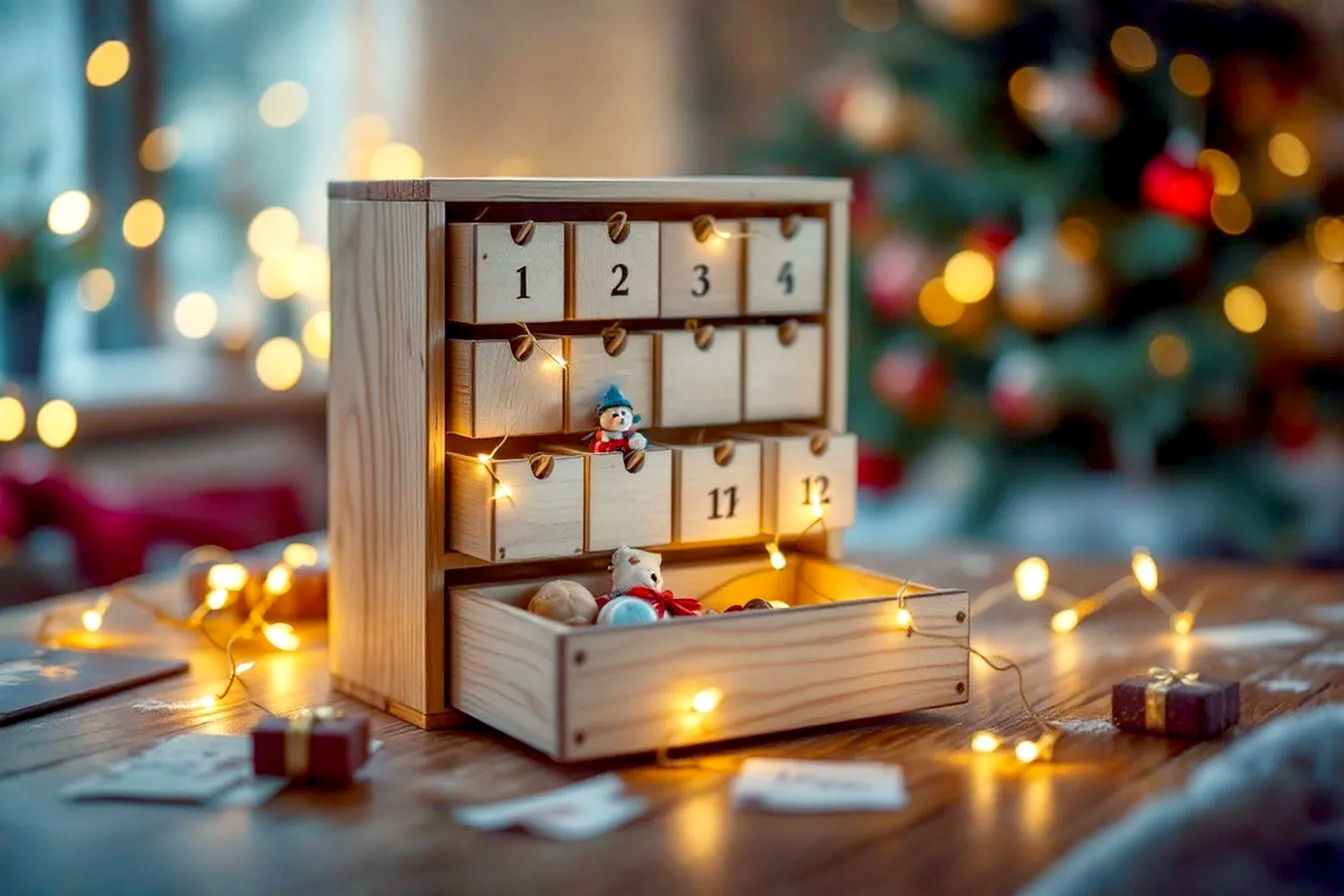This post may contain affiliate links. If you make a purchase through these links, we may earn a commission at no additional cost to you.
The holiday season brings a special kind of enchantment, and nothing captures that spirit quite like a beautifully illuminated outdoor Christmas display. Imagine your home glowing with warmth, inviting smiles from passersby, and creating lasting memories for your family. But achieving that truly magical Christmas lights display isn’t just about stringing up a few lights; it’s about crafting a cohesive Christmas display that tells a story and delights the senses.
This comprehensive guide will walk you through every step of transforming your yard into a festive wonderland. We’ll explore how to plan your vision, choose the perfect outdoor Christmas decorations and lights, install them safely, and maintain that sparkle for years to come. Get ready to illuminate your holiday spirit and create a display that stands out!
The Blueprint for Brilliance: Planning Your Outdoor Christmas Display
Before you even unbox your first strand of lights, a little planning goes a long way. Think of it as drawing a map for your festive journey. A well-thought-out plan ensures your display is not only stunning but also safe and efficient.
A. Vision Boarding: Defining Your Theme and Style
Every great display starts with a clear idea. What kind of Christmas magic do you want to create? Your outdoor Christmas themes can range widely, each offering a unique feel.
- Traditional: Think classic red and green, warm white lights, Santa figures, reindeer, and perhaps a nativity scene. This style evokes nostalgia and timeless holiday cheer.
- Modern: Often features cool white or blue lights, minimalist designs, geometric shapes, and perhaps a single, striking focal point. It’s sleek and contemporary.
- Whimsical: Embrace playful elements like oversized ornaments, candy canes, animated figures, and a mix of vibrant, multi-color lights. This theme is all about fun and childlike wonder.
- Winter Wonderland: Focus on cool white or icy blue lights, snowflakes, icicles, polar bears, and frosted greenery. It creates a serene, snow-kissed ambiance, even if you don’t have real snow!
Once you pick a theme, select a color palette. Will it be classic warm white for a cozy feel, crisp cool white for a modern look, or a vibrant multi-color explosion? Perhaps you’ll opt for specific combinations like elegant blue and silver, or festive red and green. Sticking to a limited palette helps maintain cohesion.
Also, consider your home’s architecture and existing landscaping. A grand Victorian house might lend itself to a more traditional, elaborate display, while a modern ranch could shine with a simpler, elegant design. Don’t forget about your trees, bushes, and pathways; they’re all part of your canvas. This initial visioning is crucial for effective Christmas light design.
B. Mapping Your Masterpiece: Layout and Measurements
With your theme in mind, it’s time to get practical. Grab a pen and paper, or even use a simple online tool, to sketch your property. Include your house, prominent trees, bushes, walkways, fences, and any other features you plan to decorate.
Prioritize key focal points. The front door is almost always a central element, but you might also have a large tree, a prominent archway, or a specific garden feature you want to highlight. These focal points will draw the eye and anchor your planning outdoor Christmas decorations.
Next, it’s time to measure! This is vital for knowing how many lights and decorations you’ll need.
- Measure the length of your rooflines (eaves, gables).
- Measure around windows and door frames.
- Measure railings, columns, and fences.
- For trees, estimate their height and circumference. A general rule of thumb for wrapping trunks and branches densely is 100 mini-lights per vertical foot of tree. For a more sparse look, you might use 50 lights per foot.
Accurate measurements prevent frustrating trips back to the store and ensure you have enough lights to complete your vision. This step is a cornerstone of effective Christmas light installation tips.
C. Powering Your Wonderland: Electrical Considerations
Your beautiful display needs power, and ensuring you have enough, safely, is paramount. Start by assessing your existing outdoor outlets. How many do you have? Are they conveniently located?
Understanding wattage and amperage is crucial to avoiding overloads. Every light strand and inflatable has a wattage rating. Your home’s electrical circuits are rated for a certain amperage (typically 15 or 20 amps for standard household circuits). Watts divided by volts (usually 120V in the US) equals amps. For example, a 15-amp circuit can handle about 1800 watts (15 amps * 120 volts). If you exceed this, you risk tripping breakers or, worse, causing electrical fires. Always check the total wattage of your planned display against your circuit capacity.
You’ll almost certainly need outdoor-rated extension cords and power strips. These are specifically designed to withstand the elements (moisture, temperature changes) and have thicker insulation. Never use indoor cords outside; they aren’t safe. Look for cords marked “UL Listed” for outdoor use.
Perhaps the most critical safety feature is the GFCI (Ground Fault Circuit Interrupter) outlet. These outlets detect imbalances in electrical current and quickly shut off power to prevent electric shock. All outdoor outlets should be GFCI-protected. If yours aren’t, consider having an electrician install them, or use portable GFCI adapters. This ensures the safety of your powering outdoor Christmas lights setup.
The Luminous Palette: Choosing the Right Christmas Lights
The type of lights you choose profoundly impacts the look, feel, and energy consumption of your display. Let’s explore the options.
A. LED vs. Incandescent: A Bright Comparison
This is one of the biggest decisions you’ll make when buying Christmas lights.
LED (Light Emitting Diode) Technology
LED Christmas lights have become the industry standard for good reason. They offer significant advantages over traditional incandescent bulbs.
- Energy Efficiency: LEDs consume dramatically less electricity. For example, a 70-light strand of incandescent mini-lights might use 40 watts, while a comparable LED strand might use only 4.8 watts. This translates to substantial savings on your electricity bill, making them truly energy-efficient Christmas lights.
- Durability: LEDs are made with solid-state components, meaning they don’t have fragile filaments that can break. They are much more resistant to breakage from drops or rough handling, contributing to a longer lifespan.
- Color Vibrancy and Consistency: LEDs produce very pure, consistent colors. Unlike incandescent bulbs, which use colored glass that can fade or chip, the color in an LED comes from the semiconductor material itself. This ensures your reds are truly red and your blues are truly blue, year after year.
- Cool to the Touch: Because LEDs convert most of their energy into light rather than heat, they remain cool to the touch. This significantly reduces the risk of fire hazards, especially when lights are draped over dry foliage or near flammable materials.
- Upfront Cost vs. Long-Term Savings: While LEDs typically have a higher initial purchase price than incandescent lights, their lower energy consumption and much longer lifespan (often 25,000 hours or more, compared to 2,000 hours for incandescents) mean they save you money in the long run.
Technical Explanation of LEDs: An LED is a semiconductor device that emits light when an electric current passes through it. This process is called electroluminescence. Unlike incandescent bulbs that generate light by heating a filament until it glows, LEDs produce light directly from the movement of electrons within a semiconductor material. Different materials and doping agents in the semiconductor determine the color of the light emitted. This solid-state nature is why they are so much more efficient and durable.
Incandescent Lights
While less common for new outdoor displays, incandescent lights still hold a place for some who prefer their unique characteristics.
- Traditional Warm Glow: Many people love the classic, warm, yellowish glow of incandescent bulbs. This is often described as a softer, more nostalgic light.
- Lower Upfront Cost: Incandescent strands are generally cheaper to buy initially.
Technical Explanation of Incandescent Bulbs: An incandescent light bulb produces light by heating a thin wire filament (usually made of tungsten) to a very high temperature until it glows. This is achieved by passing an electric current through the filament, which has electrical resistance. The resistance causes the filament to heat up (Joule heating) and emit light as a result of incandescence. However, a significant portion of the energy is lost as heat, making them much less efficient than LEDs. They also have a shorter lifespan because the filament eventually burns out.
B. Bulb Sizes and Shapes: Setting the Mood
Beyond the technology, the physical size and shape of the bulbs play a huge role in your display’s aesthetic. Different types of outdoor Christmas lights offer distinct visual impacts.
- Mini Lights (M5, 5mm): These are the smallest and most common. They’re delicate and versatile, perfect for wrapping wreaths, garlands, small bushes, or creating a subtle twinkle.
- C7/C9 Bulbs: These are the classic, larger bulbs often seen outlining rooflines. C7 bulbs are about 1.5 inches tall, while C9 bulbs are larger at about 2.5 inches. They create a more prominent, traditional look. Understanding the C7 vs C9 Christmas lights difference is key for roofline designs.
- G-Series (Globe) Bulbs: These are round, spherical bulbs (e.g., G30, G40, G50) that offer a diffused, soft glow. They’re great for a vintage feel or for hanging in outdoor living spaces.
- Net Lights: Designed as a pre-strung grid, net lights are incredibly convenient for quickly covering bushes, shrubs, or small trees. They save a lot of time and ensure even coverage.
- Icicle Lights: These strands feature varying lengths of vertical drops, mimicking hanging icicles. They’re popular for rooflines, gutters, and railings to create a wintery effect.
- Rope Lights: These are tiny LED or incandescent bulbs encased in a flexible, clear PVC tube. They’re excellent for outlining architectural features, pathways, or creating custom shapes.
C. Smart Lighting: The Future of Festive Displays
For those who love technology and dynamic displays, smart Christmas lights are a game-changer. These lights offer unparalleled control and customization.
- App Control: Many smart light systems come with dedicated smartphone apps that allow you to turn lights on/off, change colors, adjust brightness, and select from a myriad of pre-programmed patterns.
- Customizable Colors and Patterns: Imagine changing your lights from warm white to red and green, or even pulsing them to different rhythms, all with a tap on your phone. Some systems allow you to “paint” specific sections of your display with different colors.
- Synchronization with Music: Advanced smart lighting systems can even synchronize your light display to music, creating a truly immersive and synchronized Christmas lights show that will amaze your neighbors.
- Integration with Smart Home Systems: Many smart lights can integrate with popular smart home platforms like Google Home, Amazon Alexa, or Apple HomeKit. This means you can control your lights with voice commands or include them in larger home automation routines.
The benefits are clear: convenience, incredible flexibility, and the ability to create truly dynamic and unique displays that evolve throughout the season.
Beyond the Glow: Complementary Outdoor Decorations
While lights are the heart of a Christmas display, other decorations add depth, texture, and personality, helping to create a truly cohesive look.
A. Greenery and Garlands: Natural Elegance
Incorporating natural or artificial greenery adds a timeless touch.
- Wreaths: A beautiful wreath on your front door is often the first thing visitors see and serves as a welcoming focal point. Consider adding lights to it for evening sparkle.
- Garlands: Drape garlands along railings, around doorways, over lampposts, or even around columns. Many garlands come pre-lit, or you can weave in your own mini lights. Outdoor Christmas garlands instantly add a touch of classic holiday charm.
- Swags and Bows: Smaller swags can adorn windows or porch columns, while large, weather-resistant bows can add pops of color to wreaths or lampposts.
B. Inflatables and Yard Art: Fun and Whimsy
For a playful and eye-catching display, inflatable Christmas decorations and yard art are popular choices.
- Choosing Appropriate Sizes and Themes: Make sure the size of your inflatable fits your yard and doesn’t overwhelm the space. Ensure its theme aligns with your overall display (e.g., a whimsical Santa inflatable for a whimsical theme).
- Securing Inflatables Properly: Inflatables can be a sail in the wind. Always use the included stakes and tethers, and consider adding extra sandbags inside the base for stability, especially in windy areas.
- Lighted Yard Sculptures: Metal or acrylic sculptures of reindeer, sleighs, snowmen, or angels, often pre-lit with LEDs, add elegant structure and glow to your lawn. These Christmas lawn ornaments can be a beautiful addition.
C. Projectors and Special Effects: Dynamic Visuals
To add movement and unique visual interest, consider projectors and special effects.
- Laser Projectors: These devices project thousands of tiny, moving lights onto your house, creating a magical effect of stars or snowflakes. They’re easy to set up and cover a large area.
- Gobo Projectors: For a more customized touch, gobo projectors can project specific images like Santa, a Christmas tree, or even a custom message onto your home.
- Spotlights: Use outdoor spotlights to highlight specific features of your home, a grand tree, or a key decoration. Colored lenses can add a dramatic effect. These outdoor Christmas projectors can transform plain surfaces.
- Snow Machines/Bubble Machines: If your climate allows, a snow machine can create a truly immersive winter wonderland experience. Bubble machines add a fun, whimsical touch for children. Ensure these are outdoor-rated and used safely.
D. Pathway Lighting: Guiding the Way
Don’t forget to illuminate the path to your festive display. Pathway lighting Christmas ensures safety and extends the magical ambiance.
- Stake Lights: These are individual lights on stakes that you push into the ground along walkways. They come in various styles, from simple mini-lights to larger C7/C9 bulbs or decorative lanterns.
- Solar Pathway Lights: For an easy, no-wiring option, solar-powered pathway lights charge during the day and automatically illuminate at dusk.
- Outlining Walkways: Use rope lights or simple light strands secured with landscape staples to define the edges of your paths, guiding visitors safely and aesthetically.
The Art of Installation: Bringing Your Vision to Life
Now for the hands-on part! Installing your lights and decorations requires patience, attention to detail, and, most importantly, a strong focus on safety.
A. Safety First: Essential Precautions
Before you climb a ladder or plug anything in, prioritize safety.
- Inspecting Lights and Cords: Always inspect all light strands, extension cords, and decorations for frayed wires, cracked insulation, broken sockets, or damaged bulbs. Discard anything that looks compromised. Even a small crack can allow moisture in, creating a shock hazard.
- Using Ladders Safely: If you’re working at heights, use a sturdy, outdoor-rated ladder. Place it on a firm, level surface. Always maintain three points of contact (two hands and one foot, or one hand and two feet) while climbing or working. Never overreach; it’s better to reposition the ladder.
- Working with a Partner: Having someone spot you on the ladder or hand you lights makes the job safer and easier.
- Avoiding Overhead Power Lines: This is critical. Maintain a significant distance from any overhead power lines. Never string lights across them or attach anything to utility poles. If you have any doubts, consult a professional. Adhering to these rules is paramount for Christmas light safety.
B. Hanging Techniques: Rooflines, Trees, and More
Different areas of your property require different hanging methods to achieve that professional, cohesive look.
Roofline Lights
Outlining your roofline is a classic and impactful way to define your home’s festive presence.
- Light Clips: Use specialized light clips that attach to shingles or gutters. These provide a secure and uniform way to hold your lights. Avoid staples or nails, as they can damage wires and create fire hazards.
- Consistent Spacing and Straight Lines: Measure and mark your spacing for each bulb (e.g., 6 inches, 12 inches) to ensure a neat, professional appearance. Use a string line or laser level to keep your lines perfectly straight.
- Using a Measuring Tape for Uniformity: This isn’t just for calculating length; use it during installation to ensure consistent spacing between bulbs or icicle drops.
Tree Wrapping
Illuminating your trees adds vertical interest and a magical glow. This is a key part of tree wrapping Christmas lights.
- Trunk Wrapping (Dense Spiral): For a dramatic effect, wrap the tree trunk tightly with mini lights, spiraling upwards from the base. This creates a solid column of light.
- Branch Wrapping (Outward from Trunk): For the canopy, start near the trunk and wrap each major branch individually, working your way outwards to the tip. Then, return to the trunk and move to the next branch. This method provides a full, even glow.
- Net Lights for Quick Coverage: For smaller, dense bushes or trees, net lights are a fantastic time-saver. Simply drape them over the foliage for instant, even illumination.
Window and Doorway Outlines
These areas frame your home’s entry points and interior views.
- Using Suction Cups or Adhesive Clips: For windows, use suction cup clips specifically designed for lights. For door frames, adhesive-backed clips work well. Ensure surfaces are clean and dry for best adhesion.
- Ensuring Even Distribution: Space lights evenly around the perimeter of windows and doors to create a clean, symmetrical outline.
Bush and Shrub Lighting
These provide a soft, glowing foundation for your display.
- Draping, Weaving, or Net Lights: For a natural look, drape strands loosely over bushes. For denser coverage, weave lights through the branches. As mentioned, net lights are ideal for quick, uniform coverage.
- Avoiding Dense Tangles: Don’t just throw lights on; take the time to spread them out to prevent hot spots and ensure an even glow.
Securing Decorations
Beyond lights, ensure all your other decorations are firmly in place.
- Stakes, Ties, Sandbags for Inflatables: Use the provided stakes and rope ties for inflatables. In windy areas, place sandbags inside the base of larger inflatables for extra stability.
- Wind Considerations: If you live in a windy area, choose heavier decorations and secure everything more robustly. Strong winds can turn lightweight decorations into projectiles.
C. Timers and Automation: Effortless Control
Once your display is up, you don’t want to manually plug and unplug everything every day. Christmas light timers are your best friend.
- Mechanical vs. Digital Timers:
- Mechanical timers are simple, dial-based devices where you push down pins for the hours you want the lights on. They’re reliable and inexpensive.
- Digital timers offer more precise control, allowing you to set multiple on/off times, often with countdown features or random modes to deter burglars.
- Smart Plugs and Smart Lighting Systems: For ultimate convenience, smart outdoor plugs can be controlled via an app or voice assistant. If you’ve invested in smart lighting systems, they often have built-in scheduling features, allowing for seamless automation.
- Benefits: Timers save energy by ensuring lights aren’t left on unnecessarily. They also provide convenience, ensuring your display comes on and off at consistent times, even when you’re not home.
Mastering Cohesion: Tying It All Together
This is where your display truly transforms from a collection of lights into a unified, magical scene. Cohesion is about creating harmony across all elements.
A. Unified Color Palette
As discussed in the planning phase, sticking to a consistent color scheme is paramount.
- Sticking to 2-3 Primary Colors or Shades: For example, choose warm white and gold for elegance, or cool white and blue for a frosty look.
- Avoiding Clashing Colors: Randomly mixing bright primary colors with pastel shades can create a chaotic, rather than cohesive, look.
- Using Accent Colors Sparingly: If your main palette is warm white, a few strategically placed red bows or green garlands can add a festive pop without disrupting the overall harmony.
B. Consistent Light Temperature
This is a subtle but powerful element of cohesion.
- Mixing Warm White and Cool White: Warm white Christmas lights have a yellowish, inviting glow, reminiscent of traditional incandescent bulbs (around 2700-3000 Kelvin). Cool white Christmas lights have a bluer, crisper tint, often perceived as more modern or icy (around 5000-6500 Kelvin). Mixing these two temperatures in the same display can create a jarring effect, making your lights look mismatched.
- Choosing One Dominant Temperature: For a truly cohesive display, select either warm white or cool white as your dominant light temperature for all your main light strands. If you use multi-color lights, ensure their color rendition aligns with your chosen theme.
Technical Explanation: Correlated Color Temperature (CCT): Light temperature is measured in Kelvin (K). Lower Kelvin values (e.g., 2700K) indicate a warmer, more yellowish light, while higher Kelvin values (e.g., 5000K) indicate a cooler, bluer light. This measurement is called Correlated Color Temperature (CCT). When selecting lights, check the CCT rating to ensure consistency across different products and brands. For example, a “soft white” LED might be 2700K, while a “daylight” LED could be 5000K.
C. Repetition and Rhythm
These design principles create a sense of order and flow.
- Repeating Elements: Use the same type of wreath on every window, or identical lighted spheres in each garden bed. Repetition provides a visual rhythm that ties the display together.
- Creating Visual Flow: Think about how the eye moves across your display. Use light patterns or the placement of decorations to guide the viewer’s gaze from one section to the next. For instance, a continuous line of lights along a pathway leads the eye to the front door.
- Balancing Density: Avoid cramming too many decorations into one area while leaving another section sparse. Distribute your lights and decorations evenly to create a balanced, harmonious look across your entire property.
D. Focal Points and Layering
A well-designed display has a hierarchy of interest.
- Designating a Main Focal Point: This could be a grand, elaborately wrapped tree, a stunning illuminated archway over your walkway, or a beautifully decorated front porch. This main focal point draws initial attention.
- Layering Different Types of Lights and Decorations: Don’t just use one type of light. Combine them! For example, use mini lights woven through branches, C9 bulbs outlining the roofline, and spotlights to highlight specific statues or architectural features. This layering creates depth, visual interest, and a richer, more complex display.
E. Day vs. Night Appeal
Your display should look good both when it’s lit up at night and when the sun is shining.
- Ensuring Decorations Look Good Even When Lights Are Off: Choose decorations that have aesthetic appeal in daylight. Festive bows, natural garlands, and well-placed non-illuminated figures still contribute to the holiday spirit during the day.
- Using Natural Elements: Incorporate pinecones, berries, and evergreen branches into your garlands and wreaths for natural beauty that looks great 24/7.
Post-Holiday Care: Storage and Maintenance
Once the holidays are over, proper takedown and storage are essential to protect your investment and make next year’s setup much easier.
A. Proper Takedown
- Disconnecting Power Safely: Always unplug all lights and decorations before you start taking them down. Never handle live electrical cords.
- Cleaning Lights and Decorations: Before storing, gently wipe down lights and decorations to remove dirt, dust, and any debris. This prevents grime from building up over time.
- Inspecting for Damage: As you take things down, quickly inspect each item for any damage that occurred during the season. Note any broken bulbs, frayed wires, or damaged decorations so you can repair or replace them before next year.
B. Organized Storage
This is where you prevent the dreaded “tangle monster” of Christmas past. Christmas light storage can be simple and effective.
- Spools for Light Strands: Invest in light spools or reels. These allow you to neatly wrap each strand of lights, preventing tangles and making them easy to unroll next year. You can also use cardboard cutouts or even empty coffee cans for smaller strands.
- Airtight Containers for Decorations: Store wreaths, garlands, and other delicate decorations in sturdy, airtight plastic bins. This protects them from dust, moisture, and pests.
- Labeling Boxes: Clearly label each storage box with its contents (e.g., “Roofline Lights,” “Front Door Wreath,” “Pathway Lights”). This saves immense time and frustration when you’re ready to decorate again.
- Storing in a Cool, Dry Place: Basements, attics, or garages are common storage spots. Ensure the area is cool, dry, and free from extreme temperature fluctuations, which can degrade materials over time.
C. Troubleshooting Common Issues
Even with the best care, sometimes lights don’t work. Knowing how to troubleshoot outdoor Christmas lights can save you from replacing entire strands.
- Dead Bulbs (Incandescent): If one incandescent bulb goes out, the entire section or strand might go dark. Use a light tester (a small, inexpensive tool) to quickly identify the faulty bulb. Replace it with a bulb of the correct voltage and wattage.
- Flickering Lights: This can indicate a loose connection, a faulty bulb, or an overloaded circuit. Check all connections, ensure bulbs are screwed in tightly, and verify you haven’t exceeded your circuit’s capacity.
- GFCI Tripping: If your GFCI outlet keeps tripping, it means it’s detecting a ground fault. This is a safety feature, not a malfunction of the outlet itself. It usually indicates an overloaded circuit, a damaged light strand, or moisture getting into a connection. Unplug everything, inspect for damage, and try plugging items back in one by one to isolate the problem.
Conclusion: Your Magical Christmas Legacy
Creating a cohesive Christmas display is a rewarding experience that extends far beyond just hanging lights. It’s about crafting a welcoming, joyful atmosphere that reflects your holiday spirit. By taking the time to plan your vision, choose the right elements, install them safely, and maintain them properly, you’re not just decorating your home; you’re building a tradition.
Remember the key takeaways: planning is paramount, safety is non-negotiable, and cohesion transforms a jumble of lights into a truly magical scene. As the season unfolds and your illuminated masterpiece brings smiles to faces, you’ll realize the effort was worth every moment. Your outdoor Christmas display won’t just be lights; it will be a beacon of holiday cheer, creating lasting memories for your family and community year after year.

